67% of hiring managers say a clear public presence speeds hiring decisions and pays off in better roles.

We believe intentional self-expression changes the arc of work and life. A personal brand is the deliberate story we shape about our value. It guides what people expect and how opportunities find us.
Harvard Business School experts Jill Avery and Rachel Greenwald remind us that a strong brand narrative must be accurate, coherent, compelling, and different. Those four elements reduce imposter feelings and raise confidence.
In this guide we promise one thing: clear, consistent branding helps the right people see our worth faster. We will define purpose, map an audience, audit existing equity, craft a resonant story, pick channels and content, socialize our message, and measure what matters.
As Music Artist Jada Davino says, “Your brand is the story you tell every day—with your work, your words, and your wins.” That line is our benchmark for action—simple, repeatable, and focused on results.
Key Takeaways
- Clear narrative attracts aligned opportunities and boosts confidence.
- We will follow a stepwise method for audience, content, and channels.
- Research-backed traits—accurate, coherent, compelling, differentiated—matter.
- Execution across social media and content must be repeatable for creators.
- We aim for measurable progress that supports career and business goals.
Understand Search Intent and What Readers Need Right Now
We match daily work and words with what people are actually searching for online. Treating our brand like product marketing means we identify demand, then serve useful content where the audience already spends time.
We clarify search intent for our niche—are people after definitions, quick steps, examples, or tool picks? That clarity shapes the post format and the media we choose.
- Short-form for awareness: snackable social media posts and tips that spark interest.
- Long-form for decision: frameworks, case studies, and downloads that build trust.
- Use polls, comments, and analytics to learn where people prefer to engage.
“Your brand is the story you tell every day—with your work, your words, and your wins.”
We convert DMs and questions into content prompts and add next-step CTAs—save, share, comment for engagement; listen, subscribe, book for deeper action. This strategy keeps our content useful today and meaningful for long-term career and business goals.
Personal Branding Fundamentals for 2025
Every post, call, and project quietly shapes the reputation that opens doors. A personal brand is the strategic expression of value—what we stand for, how we help, and why people trust us. In 2025, we treat this work as ongoing practice, not a one-time launch.
What this means and why it matters
Our brand builds credibility, clarifies goals, and creates aligned opportunities. Clear positioning makes it easier for collaborators and sponsors to see our strengths. That credibility reduces imposter feelings and raises confidence.
Make your narrative hold up
Harvard Business School frames an effective narrative by four qualities: accurate, coherent, compelling, differentiated. We use this test across profiles, pitches, and content so our story stays consistent and believable.
Myths we drop
- Not overnight: credibility compounds with steady work.
- Not just for influencers: brands help anyone who wants influence and clarity.
- Not mere self-promotion: it’s service plus proof, not bragging.
- Not extroversion-only: introverts scale impact through repeatable formats and strengths.
“Your brand is the story you tell every day—with your work, your words, and your wins.”
— Jada Davino
We use examples of differentiated positioning—audio-first educator simplifying AI for solo creators, or community-led podcast coach for underrepresented voices—so our way forward is clear. Knowledge plus consistency beats volume alone; focus creates momentum and measurable results for career growth.
How to Build a Personal Brand
A clear purpose turns daily work into a recognizable reputation.
One-sentence value proposition: we state who we serve, how we help, and the outcome we deliver—then use that sentence across bios and intros.
Define purpose, goals, audience, and value
Write a single-line promise and pin it where people see it. Use that line in profiles, pitches, and lead magnets.
Set a measurable goal—book more client work, grow downloads, or attract sponsors—and let that goal guide content and outreach.
Profile your audience: roles, pain points, formats they prefer, and where they gather. Let those facts shape voice and channels.
Audit your brand equity
Credentials: list degrees, certifications, awards, and notable projects that prove expertise.
Social capital: map mentors, collaborators, and community leaders; plan focused outreach to deepen high-impact ties.
Cultural capital: highlight unique life experience, empathy, and perspective that differentiate our voice.
| Audit Area | What to list | Action |
| Credentials | Degrees, certifications, awards, projects | Showproof on website, lead with strongest items |
| Social capital | Mentors, collaborators, communities | Schedule outreach and shared work |
| Cultural capital | Experiences, background, empathy | Weave into content and case stories |
Identify perception gaps—what we think versus what people say—and pick one priority shift to fix first.
Tie the audit to skills development. If leadership or production quality is weak, plan training or partner with experts to accelerate expertise.
- Keep a simple brand doc: purpose, goal, audience, and proof points.
- Revisit this step quarterly so our brand grows with our skills and opportunities.
Craft Your Story: From Reputation to Resonant Narrative
We turn daily wins into short proof stories that close the gap between how we present ourselves and how people see us. Clear narratives align reputation with intent and make our value tangible.
Close the gap with proof stories
Document three proof stories that show before and after—client wins, creative breakthroughs, and community milestones. Use the format: Challenge, Choice, Change, Result so each story is crisp and shareable.
Message pillars that stick
Create 3–5 repeatable pillars—short themes people remember and repeat. Translate each into hooks and taglines you reuse across profiles, show notes, and media kits.
Design a simple visual system
Pick a logo or wordmark, a color palette, typography, and an image style. Keep visual and verbal identity consistent so our reputation and brand reinforce one another.
- Script reputation bridges—one-liners that reframe outdated views.
- Prepare assets for media: thumbnails, audiograms, carousels.
- Keep a tidy asset folder with templates, bios, and headshots for fast collaboration.
| Asset | Purpose | Frequency |
| Proof stories | Show outcomes | Quarterly |
| Message pillars | Guide content | Always |
| Visual system | Build recognition | Once, revise |
“Your brand is the story you tell every day—with your work, your words, and your wins.”
Choose Your Channels and Content Mix
Pick platforms where our audience already spends time and where we can keep showing up. This choice shapes reach, energy, and long-term results. Start small—one primary platform and one secondary—and expand only after the rhythm feels sustainable.
Pick platforms where your audience lives (and you can sustain)
We pick one primary and one secondary platform where our audience is active and where we can show up consistently. That discipline prevents burnout and keeps our voice sharp.
Content strategy: short-form for awareness, long-form for depth and expertise
Balance discovery with credibility. Use reels, threads, and shorts to attract attention. Use newsletters, blog posts, or episodes to establish expertise and drive inquiries.
- Website as home base: own content and email lists to guard against algorithm shifts.
- Production tricks: batch recording, templates, and caption banks save time.
- Community building: engage in comments, ask questions, and reply thoughtfully.
- Repurpose smartly: turn long pieces into multiple short posts and compile short insights into cornerstone articles.
| Choice | Why it matters | Practical step |
| Primary platform | Where most audience engagement happens | Publish 2–3 quality posts weekly |
| Secondary platform | Reinforces reach and tests new formats | Share highlights and repurposed clips |
| Website / newsletter | Content ownership and lead capture | Post monthly long-form and gate a lead magnet |
“Choose channels that allow consistent storytelling—our work and words.”
Socialize Your Brand: Relationships, Community, and Visibility
Visible action is the engine of recognition—people notice what they can actually see and share. We map four amplifiers and pick one relationship in each group this week: gatekeepers, influencers, promoters, and communities. That focused list turns vague networking into measurable work.
Leverage gatekeepers, influencers, promoters, and communities
Invite key people to see us in action—live sessions, speaking spots, or client calls—because seeing is believing. We volunteer for visible projects that align with our strengths so others can witness our best work and easily promote us.
Invite others to see you in action, keep showing up, and “say it and you’ll mean it”
Say it and you’ll mean it—use the language we want linked to our personal brand until it sticks in others’ minds. We keep a simple outreach rhythm: weekly touchpoints that move conversations forward and unlock opportunities.
- Contribute generously in communities—share resources and highlight others’ wins.
- Showcase social proof—testimonials, case studies, and media mentions for easy advocacy.
- Use social media intentionally—tag collaborators, credit sources, give clear CTAs for referrals.
| Amplifier | Action this week | Expected outcome |
| Gatekeepers | Invite one decision-maker to a demo or call | Faster introductions and project invites |
| Influencers | Share a collaborative clip or mention | Extended reach and credibility |
| Promoters | Send a concise brief and sample asset | More press and partner referrals |
| Communities | Answer questions and post a resource | Trust, repeat clients, and organic opportunities |
“Your brand is the story you tell every day—with your work, your words, and your wins.”
— Jada Davino
Measure What Matters and Adapt Over Time
Daily metrics are not just numbers—they are signals that guide our next post and next move. We pick a small set of measures and review them on a steady schedule so our work becomes a feedback loop, not guesswork.
Engagement, reach, followers, website traffic: turn data into insights
We track likes, shares, comments, reach, follower growth, and website traffic via GA4. These metrics show which topics, hooks, and formats get traction.
Action rule: double down on what resonates, retire what doesn’t, and test one variable at a time. Annotate spikes and dips—note launches, collaborations, or platform shifts so each result has context.
Iterate your strategy: commit, act with courage, build capability, gain confidence
Adopt the four-step loop—Commitment, Courage, Capability, Confidence—as our rhythm. Commit to experiments, act with courage, learn new skills, then let confidence compound with results.
- Review metrics weekly and goals quarterly.
- Translate insights into follow-up posts and refreshed website pages.
- Define success by leads, invites, and collaborations—outcomes that move a career or business forward.
- Keep a simple log of tests, outcomes, and learning points so knowledge compounds over time.
“Your brand is the story you tell every day—with your work, your words, and your wins.”
Career and Business Use Cases: Corporate, Entrepreneur, and Creators
When we make our impact easy to see, promotions, clients, and partnerships follow more predictably.
In corporate settings, we represent both company and self. Align personal positioning with company values so our contributions amplify the employer while remaining distinct.
We make work visible—share progress, insights, and wins with stakeholders. That clarity helps the right job opportunities and career moves find us.
Practical moves that pay off
- Choose projects that spotlight leadership and cross-functional skills.
- Build a client-facing proof library: case studies, clips, and testimonials for easier trust and sales.
- Sustain a professional social media presence—state views are our own while reinforcing company reputation.
- Ask leaders and mentors to see us in action—live demos often accelerate promotions and new mandates.
“Your brand is the story you tell every day—with your work, your words, and your wins.”
For entrepreneurs and creators, visibility is growth. Treat your personal brand as an engine—consistent output, clear proof, and target skills turn attention into business.
Inspiration Corner: Voices That Shape Brand Mindset
Every visible step stacks up—moment by moment—into a recognizable reputation. This section gathers practical rituals and mindset shifts that help us act with clarity each day.
“Your brand is the story you tell every day—with your work, your words, and your wins.”
— Jada Davino
We embrace Jada Davino’s line as a working mantra. It reminds us that consistent storytelling—visible work, clear language, and shared outcomes—shapes how people remember us.
- Weekly example: share one behind-the-scenes process, lesson learned, or milestone.
- Daily ritual: jot end-of-day wins and insights for future posts or media snippets.
- Align interests with service: create in ways that help people and keep us energized.
- Inspiration bank: collect quotes, case stories, and prompts for low-energy days.
- Celebrate progress: spotlight community wins so our brand signals impact, not just output.
Small habits compound over life and career. We protect focus by saying no to distractions that dilute our message and yes to ways that strengthen our signature voice.
Revisit this quote when you reset. Clarity returns when we remember brand is lived and told, one day at a time.
Conclusion
Small, visible actions build the momentum that moves careers and businesses forward. We recap the essential steps: define purpose, audit equity, craft story, pick channels, socialize relationships, and measure progress on repeat.
Keep the strategy simple—one quarter goal, one audience, one signature series. Draft your one-liner, pick two platforms, outline three proof stories, and publish one post this week.
Let your interests guide format choice so consistency fits your life and time. Deliver on promises, update messaging, and protect reputation so people repeat an accurate story about your work.
Measure outcomes that matter for job, clients, and business. Invest in skills and production. As Jada Davino reminds us, your personal brand is built one day at a time—through your work, your words, and your wins.
FAQ
What is a personal brand and why does it matter for careers and business?
A personal brand is the clear, consistent image and reputation we present through work, content, and relationships. It matters because it builds credibility, opens opportunities—clients, collaborations, roles—and turns expertise into visible value that people remember and seek out.
How do we define purpose, goals, and a clear value proposition?
Start by stating who you serve, what specific problems you solve, and the outcomes you deliver. Set measurable goals—reach, leads, clients, or speaking bookings—and write a short value statement that ties your skills and experience to those outcomes.
What should an audit of brand equity include?
Review credentials, work samples, testimonials, social profiles, and network quality. Check cultural capital—industry respect—and social capital—relationships that amplify your message. Note gaps and prioritize fixes that impact trust and discoverability.
How do we craft a resonant narrative without sounding boastful?
Use proof stories: short examples showing challenge, action, and result. Anchor messages in impact for others, not self-praise. Keep three memorable pillars—what you do, who you help, and why it matters—and repeat them across channels.
Which platforms should we choose and how do we mix content?
Choose platforms where your target audience spends time and where you can publish consistently—LinkedIn for professionals, Spotify or Apple Podcasts for audio creators, YouTube for visual work, Instagram for creators with strong imagery. Use short-form for awareness and long-form for depth and authority.
What visual elements form a reliable brand system?
Select a limited color palette, one or two typefaces, and consistent imagery style. Apply these across website, social headers, and media kits so people instantly recognize your work. Consistency creates perceived professionalism and recall.
How do we grow visibility through relationships and community?
Prioritize genuine engagement—commenting, sharing useful ideas, and helping others. Collaborate with gatekeepers and peers, appear on panels or podcasts, and nurture a small community where you test ideas and gain advocates.
What metrics should we track and how do we act on them?
Measure engagement, reach, website traffic, leads, and conversion rates tied to your goals. Turn numbers into experiments: if videos drive attention but not leads, add clearer calls to action or lead magnets and iterate.
How often should we update our strategy and content?
Review performance monthly and strategy quarterly. Commit to steady content cadence and quarterly experimentation—new formats, channels, or message tests—and adapt based on results and changing audience needs.
Can we balance a company role with an independent personal presence?
Yes. Align public messaging with employer values where needed, but own distinct expertise that adds business value. Clear boundaries and transparent disclosures keep both brand relationships healthy and mutually beneficial.
What common myths should we drop about building influence?
Influence isn’t only for extroverts or overnight sensations. It’s not pure self-promotion nor reserved for influencers. Consistent work, useful content, and real relationships produce steady growth over time.
How do creators and podcasters monetize their growing reputation?
Monetization paths include sponsorships, memberships, courses, consulting, and speaking. Start with audience-first offers—products that solve clear problems—and scale with partnerships that match your values and reach.
###


